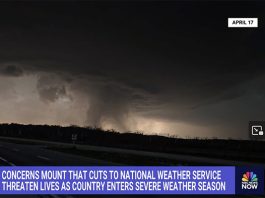This will not by any stretch of the imagination be an attempt to persuade anyone that this is the only way to manage ryegrass. This is just a simple way that we have found to realize the level of production that has been profitable year after year since 1997.
 We first used this system, for the lack of a better word, in 1997 with a set of stocker calves. This came about purely out of necessity. We simply did not have the financial wherewithal to buy a large amount of hay or feed. And to be very honest it was not our intention to make the feed man rich. We had spent 13 years in the dairy business doing that. Our goal from the outset was to make the ryegrass the sole feed source and that is exactly what we have done.
We first used this system, for the lack of a better word, in 1997 with a set of stocker calves. This came about purely out of necessity. We simply did not have the financial wherewithal to buy a large amount of hay or feed. And to be very honest it was not our intention to make the feed man rich. We had spent 13 years in the dairy business doing that. Our goal from the outset was to make the ryegrass the sole feed source and that is exactly what we have done.
Now there is no question that this is not generally accepted as the correct way to use ryegrass, and it is not my intent to argue about this, I will just make this point: We have grazed stocker calves, custom grazed heifers and for the last several years a small cow and calf herd. As in all cattle production some years are better than others, but we have never failed to make money with our ryegrass.
The limited grazing system that is so popular down here in Louisiana requires the producer to put the cattle on the grass, then move the cattle off the grass and in the meantime put out the hay that will be consumed until the cattle are moved back on the grass. After milking cows for 13 years we were not looking for a system that was too labor intense. Moving cattle once was enough. So we put the cattle on the grass in the morning and move them to the next paddock the next morning. The water trough and minerals are moved with the cattle and we are finished with this for the day.
One of the complaints heard quite often down here is that the cost of annual ryegrass is just too expensive. And for some producers this is true, simply because they do not realize the production potential in a crop of ryegrass mixed with clovers and turnips and hairy vetch and, lately, grazing radishes. The production potential will never be attained with the cattle eating hay for more hours each day than grazing the planted forages. Our cattle are turned to the ryegrass as soon as the growth will support them and are taken off of the grass in late spring. In other words the cattle are on the ryegrass paddocks 24/7 for the entire grazing season barring some unforeseen disaster. There is nothing magical or mysterious about what we do. It is simply our way to get the most return for every dollar spent.
The first step in this process is land preparation. It makes little or no sense to plow or disc ground several inches deep and expect it to hold up the weight of the cattle during a wet winter down here along the Gulf Coast. The ground is barely broken with a disc and the seed and fertilizer and pelleted lime is spread in one trip with a spreader cart from the co-op that is rented for $25.00 and then harrowed in with a homemade harrow. We are not big equipment people.
In 2016 the cost of the ryegrass mix that we planted cost $95.23 per acre. A common practice in our part of the world is to top dress the grass with nitrogen several times across the grazing season. We have been able to mostly eliminate this practice. We assume that it is because of the addition of clover to the mix for several years. But in the event that the planting is done in really dry weather the nitrogen is cut out of the fertilizer and added later if needed.

This is the mix that we planted in 2016 and the per acre planting rate: 200 lbs. of 8-24-24 fertilizer, 100 lbs. pelleted lime, 40 lbs. nelson ryegrass, 1 lb. of purple top turnips, (we plant purple top because we like to eat them too), 4 lbs. crimson clover, 1 lb. chicksaw blend ladino, 2-1/2 lbs. hairy vetch. The 10 acre cost including the $25.00 for the spreader cart was $952.25. The total planting is 20 acres split into two 10 acre plantings a week apart. This week difference makes the management easier, as everything is not at the same stage of growth. The cost for the 20 acre total was $1904.50.
Our goal is to get 150 days of grazing, in this case the daily costs would be $1904.50 divided by 150 = $12.69 per day. But this year we grazed 171 days so the costs were less $1904.50 divided by 171= $11.13.
We sell calves the first week in Oct. and work to get the ryegrass planted by Oct.15. This is the first place we really differ from the mainstream wisdom. The cows that are turned to the ryegrass are dry cows that will calf in the late winter or early spring. It is a commonly accepted fact that to graze dry cows on planted forages is too expensive and can lead to calving problems. Last year we had 17 grown cows and put them on the grass Dec. 19. The calves started to hit the ground in late March and according to our records we grazed ryegrass 171 days. How can you feed cows for less than $11.13 a day? If we do one more calculation the cow cost per day looks like this, $11.13 divided by 17 = $0.65. We did for a fact pull a calf, but some of these cows were bought carrying calves so we had no idea what kind of bull sired them. It must be remembered we are dealing with sale barn cattle. But really our calving problems have not been a problem.
A big problem that seems to concern most folks is what happens a day or two after the cows are put on the ryegrass. I had a friend who called this the “thin dirties.” Y’all know I’m talking about, but after a week or so the cow’s system adjusts and from then on she does not have a problem. The problem with the limited grazing routine where cows graze grass, then hay, then grass, is that it is possible for the cows to never adjust. Most folks put them on and take them off and if it gets too wet will leave them off the grass for a few days feeding hay and then put them back on the grass. Down here you will have as many wet days as dry during the winter and using this method the cattle never get adjusted to the changing diet. Then spring arrives and folks wonder why their cattle look so bad.
 Our 20 acres are divided into paddocks that allow for a 20 day rotation so the fact that one paddock gets a rain we don’t worry about it. It will be almost 3 weeks before the cattle return to that paddock.
Our 20 acres are divided into paddocks that allow for a 20 day rotation so the fact that one paddock gets a rain we don’t worry about it. It will be almost 3 weeks before the cattle return to that paddock.
This is just a simple outline of how we manage our ryegrass. This is a learning process and we are still learning but so far this has worked for us. Try it! You might just like it.
Let Don know what you think of his ryegrass grazing, or share things that have worked for you in the comments below.




